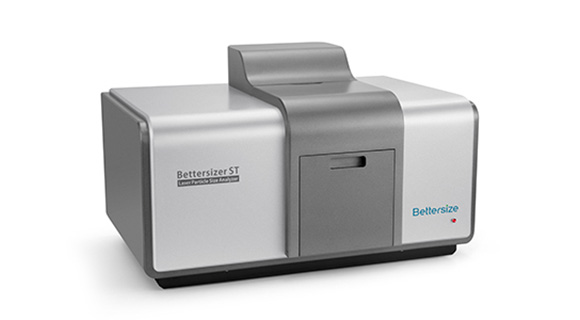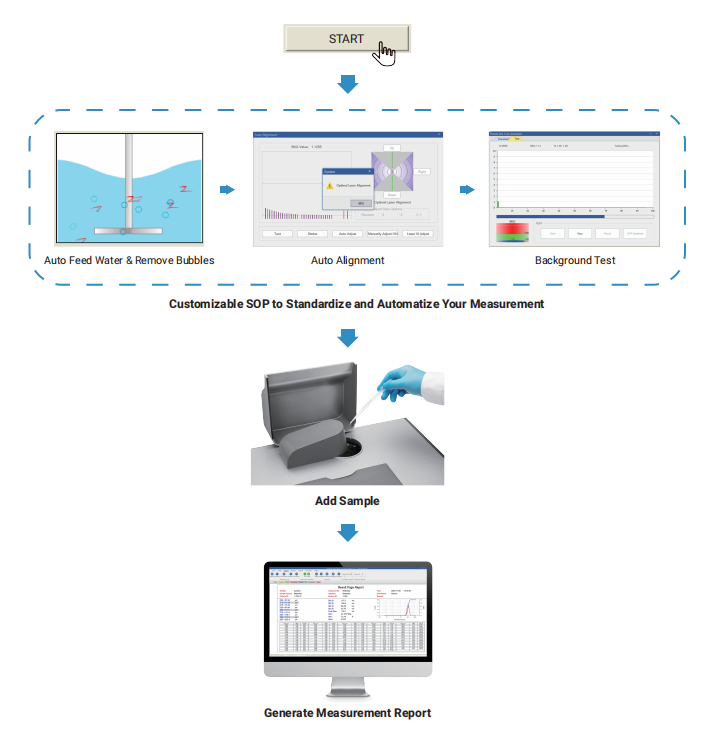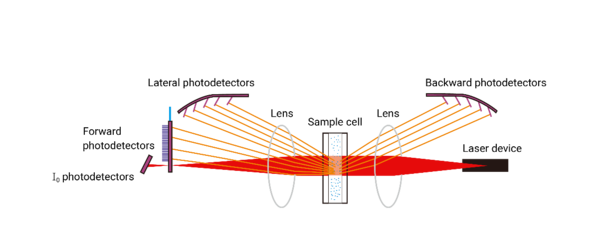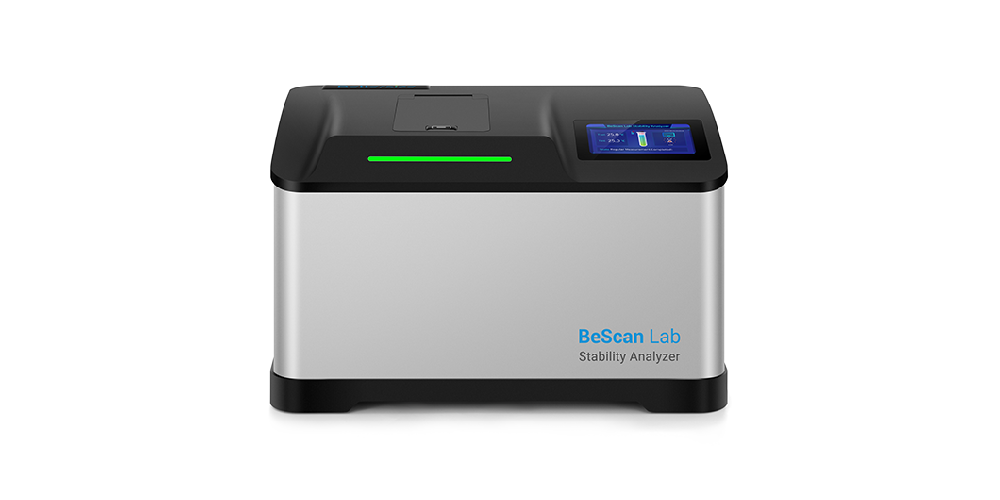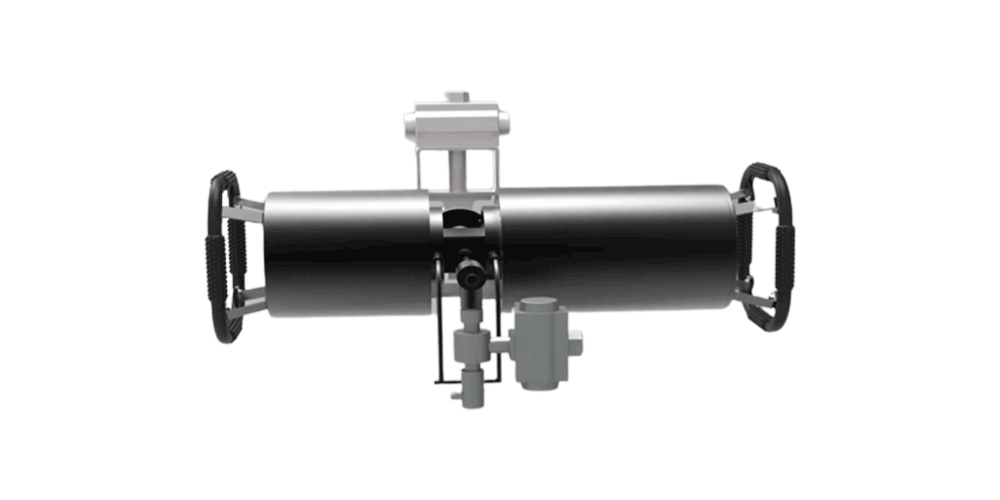Bettersizer ST
O Bettersizer ST é um analisador de tamanho de partículas totalmente automatizado e integrado com um sistema de operação inteligente por dispersão úmida. Otimizado para o processo de controle de qualidade industrial, o Bettersizer ST fornece resultados de teste estáveis e confiáveis com o mínimo de intervenção do usuário. Seu tamanho compacto economiza um espaço de trabalho valioso em fábricas e laboratórios.
Recursos e benefícios
- ● Tipo de dispersão: úmida
- ● Faixa de tamanho: 0,1 - 1.000µm
- ● Robustez
- ● Facilidade de uso
- ● Eficiência de custo
- ● Design compacto
- ● Baixa manutenção
- ● Sistema de lente dupla
- ● Funcionalidade de alinhamento automático
- ● Medição automática com SOP
Vídeo
Bettersizer ST Self-Installation is Quick and Easy 
Learn How Bettersizer ST can Help with Your Quality Control in 2 Minutes 
Bettersizer ST | Demo (CaCO3 Sample) 
How to Install and Operate Bettersizer ST 
Bettersizer ST Overview | Laser Diffraction Particle Size Analyzer for QC 
Visão geral
Sua ferramenta completa de controle de qualidade
O Bettersizer ST é um analisador automatizado de tamanho de partículas por difração a laser projetado para o controle de qualidade industrial. Seu sistema patenteado DLOS (Dual Lens Optical System) garante que o instrumento forneça resultados consistentes e confiáveis de distribuição de tamanho de partículas. O SOP (Procedimento Operacional Padrão) e os procedimentos de análise automatizados foram projetados para ajudá-lo a economizar um tempo valioso na inspeção de qualidade.
1. Excelente precisão
Verificação da precisão dos padrões
- As amostras padrão da Duke foram medidas separadamente pelo medidor de partículas a laser Bettersizer ST, mostrando o pico de distribuição na posição correta e distribuição estreita com alta precisão.

- A linha vermelha é a faixa de tamanho nominal dos padrões ± 1,0%, e os pontos pretos são os tamanhos medidos. Conforme mostrado na figura, a precisão da medição do medidor de partículas a laser Bettersizer ST para padrões está dentro de 1%.
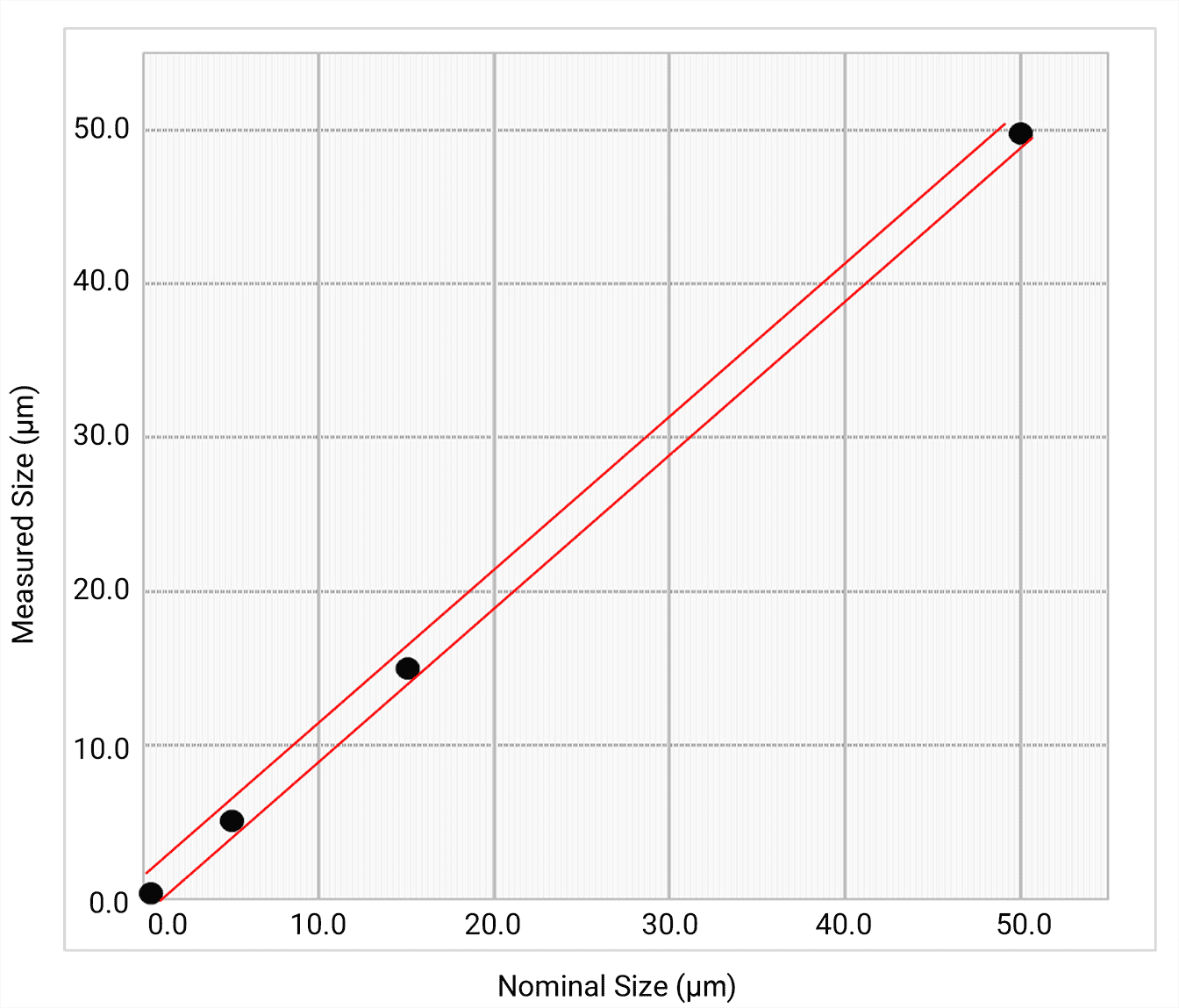
2. Excelente capacidade de repetição
A excepcional repetibilidade proporcionada pelo medidor de partículas a laser Bettersizer ST garante a confiabilidade dos resultados. Medições rápidas com resultados consistentes e confiáveis podem aliviar sua carga de trabalho no controle de qualidade.
♦ Excelente repetibilidade devido a
Estabilidade dos sistemas de transmissão de sinal - Sistema de dispersão eficiente - O alinhamento automático mantém o instrumento sempre em condições ideais - Taxa de aquisição de sinal de até 3500 vezes/segundo
Testes de repetibilidade
A excelente repetibilidade do Bettersizer ST, demonstrada pelos dois testes consecutivos a seguir.
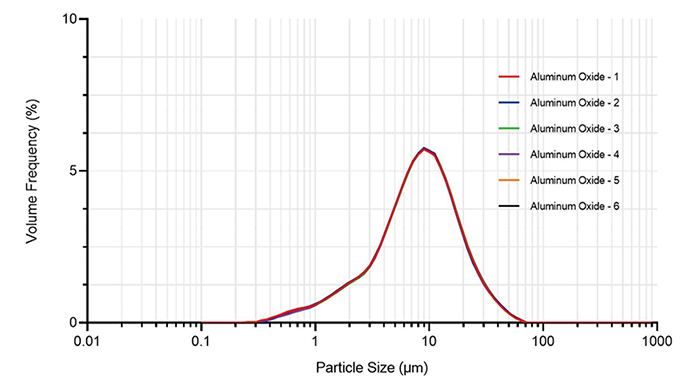 |  |
 | 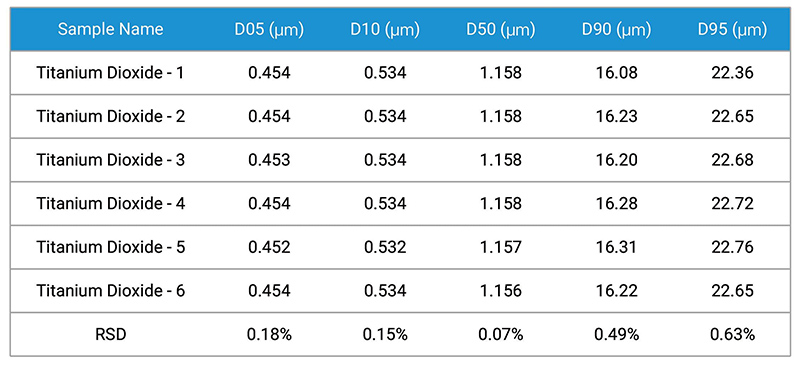 |
3. Facilite sua carga de trabalho em todos os aspectos
O software Bettersize oferece várias funções que reduzem bastante sua carga de trabalho.
1) Software intuitivo
2) Avaliação inteligente de dados para controle de qualidade

3) Validação de desempenho
Com a função independente de validação de desempenho, o software pode gerar automaticamente relatórios em conformidade com a ISO 13320 e as farmacopéias.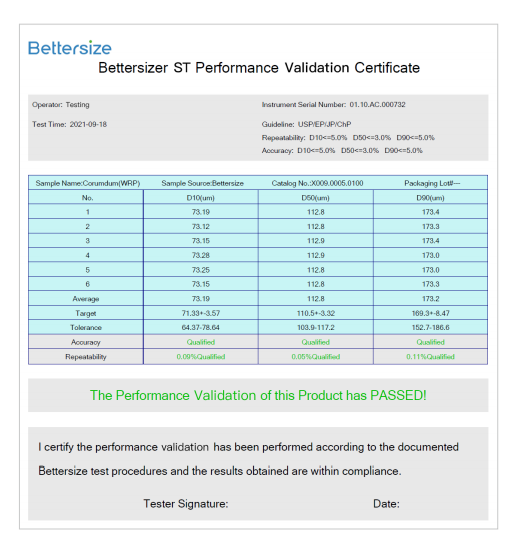
4) Inspeção do sistema
Varredura de diagnóstico: Lista de verificação de inspeção do sistema.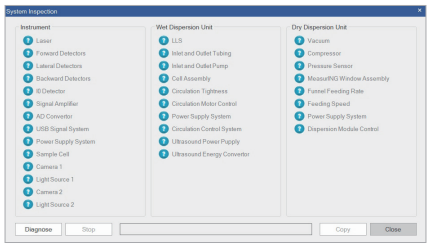
4. Custo-benefício e robustez
1) Robustez excepcional
- Fundição integrada da placa inferior para proteger o instrumento
- Medições precisas podem ser obtidas mesmo após um teste de robustez
- Fonte de laser semicondutor de fibra de longa duração
- Tanque de circulação durável com aço inoxidável fundido
- Dispersor ultrassônico de potência ajustável com proteção contra funcionamento a seco
2) Design compacto
- Economize espaço de trabalho valioso em fábricas e laboratórios com um sistema interno de dispersão úmida
- O DLOS garante a precisão e a confiabilidade dos resultados, evitando a óptica dobrável que é suscetível ao desalinhamento
3) Manutenção simples
- A desmontagem simples das células de amostra permite uma limpeza rápida, que pode ser facilmente acessada sem ferramentas profissionais e formulações excessivamente limpas
- A função de limpeza automática do tanque de circulação facilita muito o trabalho de manutenção
- O processo de autolimpeza pode ser facilmente personalizado no software
4) Baixo custo de propriedade
- Preço de entrada para um analisador de tamanho de partículas a laser
- Uma faixa de medição que abrange a maioria das aplicações pode ser obtida com o DLOS sem custo adicional de uma segunda fonte de laser
Citations
- Bettersizer 2600
Functional redundancy as an indicator for evaluating functional diversity of macrobenthos under the mussel raft farm near Gouqi Island
DOI: 10.1016/j.aquaculture.2023.740024 Read ArticleZhejiang Ocean University | 2024Biological traits analysis (BTA) helps to evaluate the effects of different environmental variables on the traits-based functional composition of macrobenthos. However, research on functional traits of macrobenthos under mussel farming is limited. We investigated the spatial and temporal response of the benthic system in terms of taxonomic and functional diversity to environmental variables of farming and natural stressors resulting from suspended mussel farming near Gouqi Island of eastern China Sea. The functional traits of macrobenthic assemblages under mussel farming were characterized by “medium adult body size”, “vermiform body form”, “high flexibility”, “infauna”, “semi-motile”, “gonochoristic”, “surface deposit-feeders”, “carnivores”, “semi-motile burrowers”, and “tube-dwellers”. Functional redundancy was stable in response to mussel farming stresses among seasons, whereas species diversity showed efficient to evaluate natural variables. Functional diversity was significantly affected by farming stressors rather than natural variables, Further analysis using multivariate methods together with continuous monitoring were highlighted to evaluate the impacts of mussel farming. Our results reinforce the importance of macrobenthic species and functional traits analysis to evaluate human stresses driven impacts in offshore ecosystems. By analysing the environmental variables with different sources, independently, we concluded the main effects of human pressures on macrobenthic community. Such distinction could be particularly effective to isolate variable environmental descriptors and evaluate their effects on functional diversity, making the current approach promising for the evaluation of ecological effects of anthropogenic stressors in aquaculture areas. - Bettersizer 2600
Degradation characteristics and utilization strategies of a covalent bonded resin-based solid amine during capturing CO2 from flue gas
DOI: 10.1016/j.seppur.2023.125621 Read ArticleChina University of Petroleum | 2024In this study, various types of degradation as well as attrition which are possibly encountered in a circulating fluidized bed temperature swing adsorption (CFB-TSA) process, were conducted experimentally to evaluate the stability of a resin-based solid amine sorbent. Other characterizations methods, such as elemental analysis (EA), Fourier transform infrared spectroscopy (FTIR) etc. were applied to further reveal the degradation mechanisms. The results showed that thermal degradation occurs from 140–160 °C due to the decomposition of amine group. The CO2-induced degradation occurs from a higher temperature of 160–180 °C accompanied by the production of urea. Hydrothermal stability is good below 130 °C, but the ionic impurities in steam crystalized on particle surface can accelerate the degradation. Oxidative degradation is the most harmful, which starts at a lower temperature of 70–80 °C with the formation of aldehyde. The existence of H2O in atmosphere can alleviate the oxidative and CO2-induced degradations. The employed sorbent has a very low attrition index of 0.05, which is 1–2 orders lower than typical commercial fluidized bed catalysts. Based on the results of stability evaluation, some design suggestions for proper utilization of this sorbent or other similar resin-based sorbents have been provided in an industrial CFB-TSA process.
- Bettersizer 2600
De-branching of starch molecules enhanced the complexation with chitosan and its potential utilization for delivering hydrophobic compounds
DOI: 10.1016/j.foodhyd.2023.109498 Read ArticleShihezi University | 2024The current study aimed to prepare the complexes between debranched-waxy corn starch and chitosan polymers (DBS-CS), and then investigated their corresponding structural characteristics, rheological property and potent application in Pickering emulsion. The results indicated that the existence of chitosan significantly inhibited starch short-range molecular rearrangement for all DBS-CS samples, which was manipulated by both debranching treatment and chitosan content. Interestingly, this is the first study to reveal that the outstanding peak at 1.8 ppm in 1H NMR spectrum for sample DBS-CS was gradually shifted towards a lower-field region following an increased chitosan content. Moreover, the debranching treatment shifted the crystallinity pattern from A-type to B-type and the relative crystallinity of DBS-CS decreased gradually with the increased content of CS. All samples had a pseudoplastic fluid and shear-thinning behavior with an enhanced shear resistance following the complexation. The DBS-CS was applied in a Pickering emulsion for showing a greater emulsifying stability and a lower gel strength than native NS-CS prepared emulsion. Importantly, the encapsulation ability of curcumin in the DBS-CS emulsion was significantly improved, followed by an increase of 15.45% for its corresponding bioavailability compared to the control. Therefore, this study might highlight a potential carrier for delivering the bioactive substances in a green pattern. - Bettersizer 2600
Heat-induced aggregation behavior of wheat gluten after adding citrus pectin with different esterification degree
DOI: 10.1016/j.foodhyd.2023.109420 Read ArticleGansu Agricultural University | 2024Wheat gluten aggregation during heat treatment is beneficial to the final quality of gluten-based products. Exogenous pectin can affect gluten aggregation. However, the effect of pectin with different degrees of esterification on the heat-induced aggregation behavior of gluten and its possible mechanism are still unclear. Thus, the heat-induced aggregation behavior of gluten after adding pectin with different esterification degree was studied in this study. When the temperature was raised from 25 °C to 95 °C, pectin affected gluten aggregation and was related to the degree of esterification. Specifically, the results of rheological properties and particle size indicated that low-ester pectin improved the viscoelasticity of gluten and promoted gluten aggregation. Thermal properties revealed that enthalpy of gluten added with low-ester pectin (37%) increased from 92.96 J/g to 95.40 J/g during heating process. Structurally, the fluorescence intensity and surface hydrophobicity of gluten added with low-ester pectin (37%) were lower than those added with high-ester pectin (73%). In addition, low-ester pectin (37%) significantly increased the disulfide bond content (from 15.31 μmol/g to 18.06 μmol/g) and maintained β-sheet content of gluten compared with gluten alone at 95 °C, indicating that low-ester pectin was more likely to induce gluten aggregation. However, scanning electron microscope showed that the gluten added with low-ester pectin (46%) exhibited a denser network structure at 95 °C than that added with low-ester pectin (37%). These results will provide a theoretical base for the regulation of gluten aggregation and the quality of gluten-based products by pectin with different esterification degree.
- 1
- 2
- 3
- 4
- 5
- 6
- 84
Recursos selecionados
Depoimentos


Analisador de tamanho de partícula relacionado
-
BeScan Lab
Stability Analyzer
Particle size ranges from 10 nm to 1 mm
Volume fraction up to 95%
Compliance with ISO/TR 18811, 13097, 21357, 22107
-
Bettersizer S3 Plus
Particle Size and Shape Analyzer
Measurement range: 0.01 - 3,500μm (Laser System)
Measurement range: 2 - 3,500μm (Image System)
-
Bettersizer 2600
Laser Diffraction Particle Size Analyzer
Measurement range: 0.02 - 2,600μm (Wet)
Measurement range: 0.1 - 2,600μm (Dry)
-
BT-Online1
Online Particle Size Analyzer
Dispersion type: Dry
Measurement range: 0.1 - 1,000μm
Accuracy: ≤1% (D50 of certified reference material)


